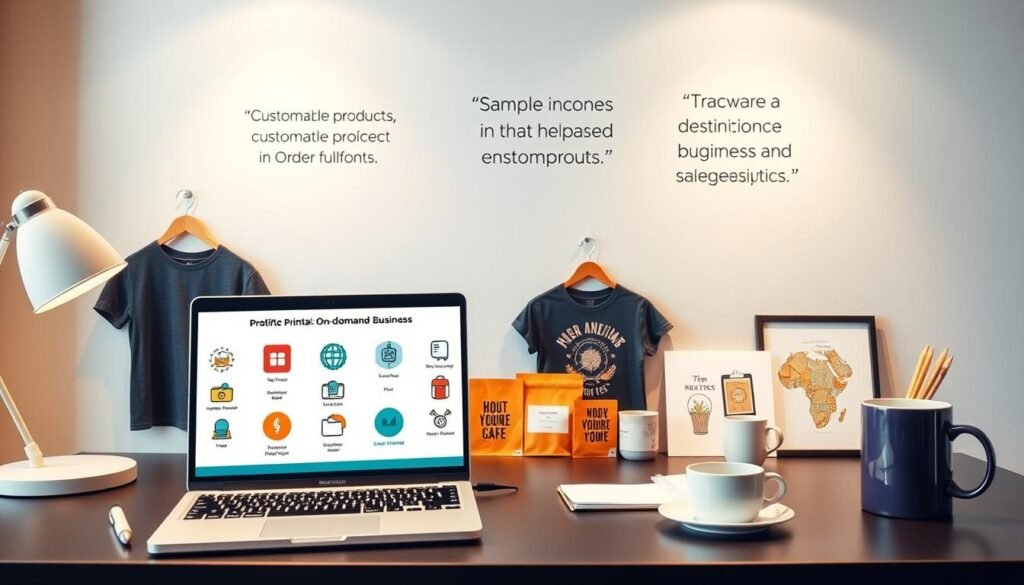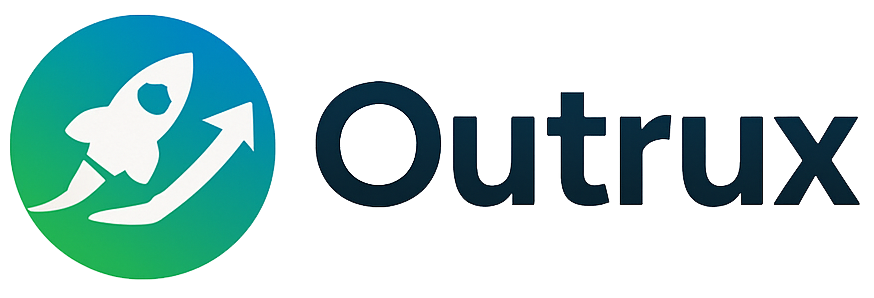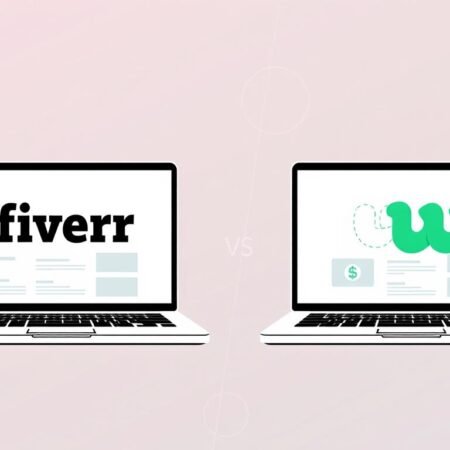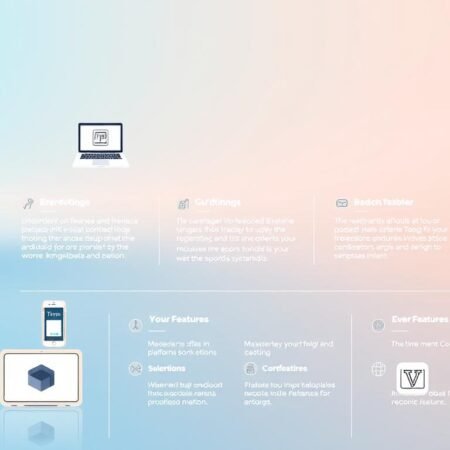Imagine creating custom products that customers love—without ever handling stock or risking your savings. The global custom merchandise industry is exploding, projected to grow over 6x larger by 2030. This isn’t just a trend—it’s a $39 billion opportunity reshaping how entrepreneurs approach ecommerce.
This model lets you focus on design and marketing while third-party partners handle production and shipping. Recent data shows searches for this business strategy have nearly tripled in five years, proving its viability for home-based ventures. With zero inventory requirements and platforms automating most tasks, it’s easier than ever to test ideas risk-free.
You’ll learn how to identify profitable niches, choose reliable partners, and build a brand that stands out. We’ll break down realistic timelines, essential tools, and scaling strategies used by successful creators. Whether you’re designing apparel or home decor, this guide provides the blueprint to turn creativity into consistent income.
Ready to capitalize on the surge in personalized products? Let’s explore how to position your venture in this booming market—starting today.
Understanding Print-on-Demand: The Business Model Explained
Envision selling custom merchandise without upfront costs or storage hassles. This is the core promise of modern ecommerce strategies that let creators focus on design while suppliers handle logistics.

What Is Print-on-Demand?
The system works like this: You upload designs to a partner platform. When customers order items like shirts or mugs, the supplier prints, packs, and ships each piece. No bulk purchases. No unsold stock cluttering your garage.
Key advantages include:
- Zero inventory risks – pay only for sold items
- Instant catalog updates based on trends
- Automatic quality checks by suppliers
How It Differs from Traditional Retail
Old-school stores require guessing what might sell. You’d buy 500 red hoodies hoping they’d move. With this model, you test 20 designs across 5 product types risk-free. Customers decide what stays popular.
Traditional retail struggles with:
- Storage fees for unsold goods
- Limited design flexibility
- High startup costs
The best part? Scaling up doesn’t mean renting warehouses. Add new products with clicks, not cargo trucks.
Profitable Print-on-Demand Business from Home: Key Concepts
Picture this: Launching a custom product line without managing warehouses or production teams. The business model thrives on digital-first strategies where creators focus on design while suppliers handle fulfillment. This approach turns creative ideas into tangible products faster than traditional methods.

Success hinges on balancing originality with market trends. Analyze what audiences want, then iterate designs using real-time feedback. Platforms let you test patterns on mugs or apparel instantly—no costly prototypes needed.
Home-based operations slash expenses like rent and staff salaries. These savings boost profit margins, letting you reinvest in targeted ads or new collections. Pricing plays a critical role—premium branding often outperforms cheap alternatives.
Scalability shines here. Add seasonal items or expand to new regions without logistical nightmares. Automation tools sync inventory across Shopify, Etsy, and your website, streamlining operations from one dashboard.
Build loyalty through quality and quick turnarounds. Repeat buyers drive long-term growth, especially when you surprise them with limited editions. Stay agile—update offerings weekly to ride viral trends before competitors catch up.
Finding Your Niche and Target Audience
Think of your favorite hobby—could it become your next income stream? The secret to standing out lies in carving a specific niche. Successful ventures thrive by addressing distinct customer needs rather than chasing broad trends.

Spotting Opportunities in Specialized Markets
Start with what excites you—vintage sci-fi art or eco-friendly parenting. Use Google Trends to spot rising interests, then cross-check with Amazon’s Movers & Shakers. Look for consistent demand with limited competition. Pet accessories for exotic animals or yoga gear for tall athletes are examples of underserved markets.
Decoding Customer Behavior
Dive into forums like Reddit’s r/vinylcommunity or Facebook gardening groups. Notice recurring frustrations—like limited design options for nurse scrubs—that your products could solve. Tools like SparkToro reveal where your audience shops online and which influencers they follow.
Compare prices across three competitors minimum. Can you offer faster shipping or bundle deals? Track seasonal patterns using Pinterest search data to anticipate demand spikes. Build detailed buyer personas—like “Budget-Conscious College Grads” or “Adventure Travel Enthusiasts”—to sharpen your marketing.
Developing a Winning Business Plan for Your POD Venture
Crafting a strategic blueprint transforms creative ideas into actionable steps for your custom merchandise venture. This document becomes your compass—detailing product benefits, customer acquisition tactics, and revenue streams while keeping operations lean.

Setting Clear Goals and Objectives
Define measurable targets using the SMART framework. Aim for 100 sales in 90 days or 15% monthly growth in website traffic. Track conversion rates (1-3% is typical for new ventures) and average order values to gauge progress.
Diversify sales channels early. Combine your branded site with Etsy listings and Instagram Shops to minimize platform dependency. Allocate specific time blocks for design creation, customer service, and marketing analysis.
Budgeting and Financial Planning
Startup costs range from $500 for basic setups to $2,000 for premium tools. Break down expenses:
- Design software subscriptions ($20-$50/month)
- Sample orders for quality checks ($150-$300)
- Paid ads budget ($200+/month)
Factor in 40-60% margin erosion from printing fees and platform cuts. Reinvest 25% of profits into scaling proven designs. Create contingency funds for supplier delays or seasonal dips—three months’ operating costs is ideal.
Choosing the Right Print-On-Demand Provider and Tools
Your success hinges on seamless collaboration between creative vision and technical execution. Selecting partners who align with your quality standards and operational needs ensures smooth order fulfillment. Let’s explore critical factors for building reliable production pipelines.
Comparing Top Services
Evaluate providers using three criteria: product variety, turnaround time, and integration capabilities. Leading platforms offer mockup generators and real-time inventory tracking. Check reviews about color accuracy – mismatched hues frustrate buyers.
Consider geographic coverage. Suppliers with multiple fulfillment centers reduce shipping costs when a customer places an order from another state. Bulk discounts and white-label packaging options help reinforce brand identity.
Integrating with Ecommerce Platforms
Sync your store with automated tools that update product listings instantly. Shopify and WooCommerce plugins enable real-time stock updates across sales channels. Test checkout flows thoroughly – abandoned carts often stem from payment gateway glitches.
Implement error alerts for failed transactions. Use analytics dashboards to monitor production delays before they impact delivery dates. This proactive approach is critical for managing growth while maintaining customer trust.











